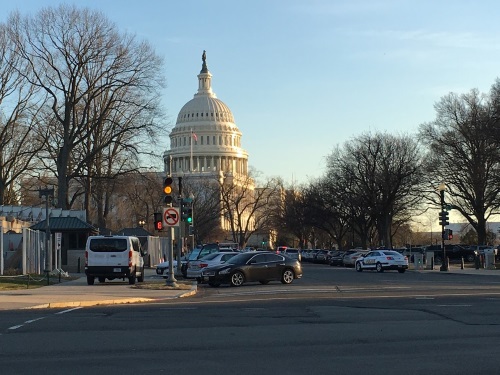Ensuring that autonomous vehicles operate in a safe and reliable manner – particularly when it comes to navigating complex street networks – were two of the key focal points of a February 11 hearing held by the House of Representatives Committee on Energy and Commerce.
“Safety and deployment must come hand in hand – we cannot have one without the other,” noted Rep. Frank Pallone, Jr., D-N.J., the committee’s chair, in his remarks at the hearing. “Because, ultimately, public acceptance of self-driving cars depends on their reliability and safety. Troubling safety incidents, regulatory black holes, and lax oversight threaten to disrupt this critical balance and the future of this technology itself.”

He said that for self-driving cars to succeed, “appropriate safeguards” must be in place – protections to ensure self-driving cars operate safely and adhere to state and local law.
“Federal regulators must have a hands-on approach to self-driving technology. They must ensure that safety is ingrained in every sensor, feature, and line of code of a self-driving car,” Rep. Pallone noted. “Regulators also must have the expertise to understand self-driving technology and not simply rely on the assurances of technology companies.”
Jeff Tumlin, director of transportation for the San Francisco Municipal Transportation Agency, noted in his testimony that autonomous vehicles “must traverse a much more chaotic driving environment” in dense cities.

“We can’t just hope that the industry can dramatically reduce road injuries. We need the industry to prove they can do so in dynamic, urban environments like San Francisco before they are allowed to deploy at scale,” he explained. “While the autonomous vehicle driving behavior that we witness on our streets appears to be cautious, we can’t be certain whether this is careful driving, or whether the technology is having trouble handling these critical processing tasks.”
[Editor’s Note: At the 2019 Federal Highway Research Showcase held at USDOT Headquarters in Washington, D.C., FHWA Administrator Nicole Nason stressed the importance of making autonomous vehicles road ready for the future and for the general public.]
Tumlin added that it may take the National Highway Traffic Safety Administration up to 10 years to develop safety standards to govern automated driving, though both NHTSA and the Federal Motor Carrier Safety Administration issued notices of proposed rulemaking to govern self-driving vehicles in May 2019.
Still, Tumlin said it would be “irresponsible” for Congress to interfere with the ability of state and local officials to foster autonomous vehicle tests on their roads.

“Cities and states are nimble and can rapidly innovate to pave the way for this new technology. Several states have developed autonomous vehicle permit programs that currently guide testing activities,” he said.
“This is a new frontier,” Tumlin stressed. “We are only beginning to understand the problems autonomous vehicles can solve and the new ones they may create. We will all learn more as different cities and states try different strategies to incorporate these vehicles safely into our stream of traffic.”
[Editor’s Note: Improving highway safety is a key emphasis area for Patrick McKenna; executive director of the Missouri Department of Transportation and the American Association of State Highway and Transportation Officials 2019-2020 president. He convened a panel to discuss highway safety at the 2020 Transportation Research Board annual meeting in Washington, D.C., this past January.]
For example, Florida and California both passed legislation in 2019 that allows companies to test self-driving vehicles on public roads. Paralleling those efforts, AASHTO filed three comment letters last year, noting that there is significant “interplay” between the vehicles’ technological capabilities and the types of state and local laws that may apply to the operation of those vehicles.
As a result, “state and local laws will need to be updated to reflect vehicle automation, and that process will need to be informed by real-world experience,” AASHTO explained.

Rep. Greg Walden, R-Ore., hoped those concerns will help Congress finally hammer out autonomous vehicle legislation this year – an effort that fell short in 2018.
“We are all Americans, and we are in this together,” he said in his remarks.
“All of this can be done without compromising safety. In fact, the roads will all be safer,” Rep. Walden noted. “We have the ability to break down the barriers to mobility facing seniors and the disabled community. And we can create new economic opportunity by ensuring the United States can be the global leader in this emerging technology. Let’s get this done.”



